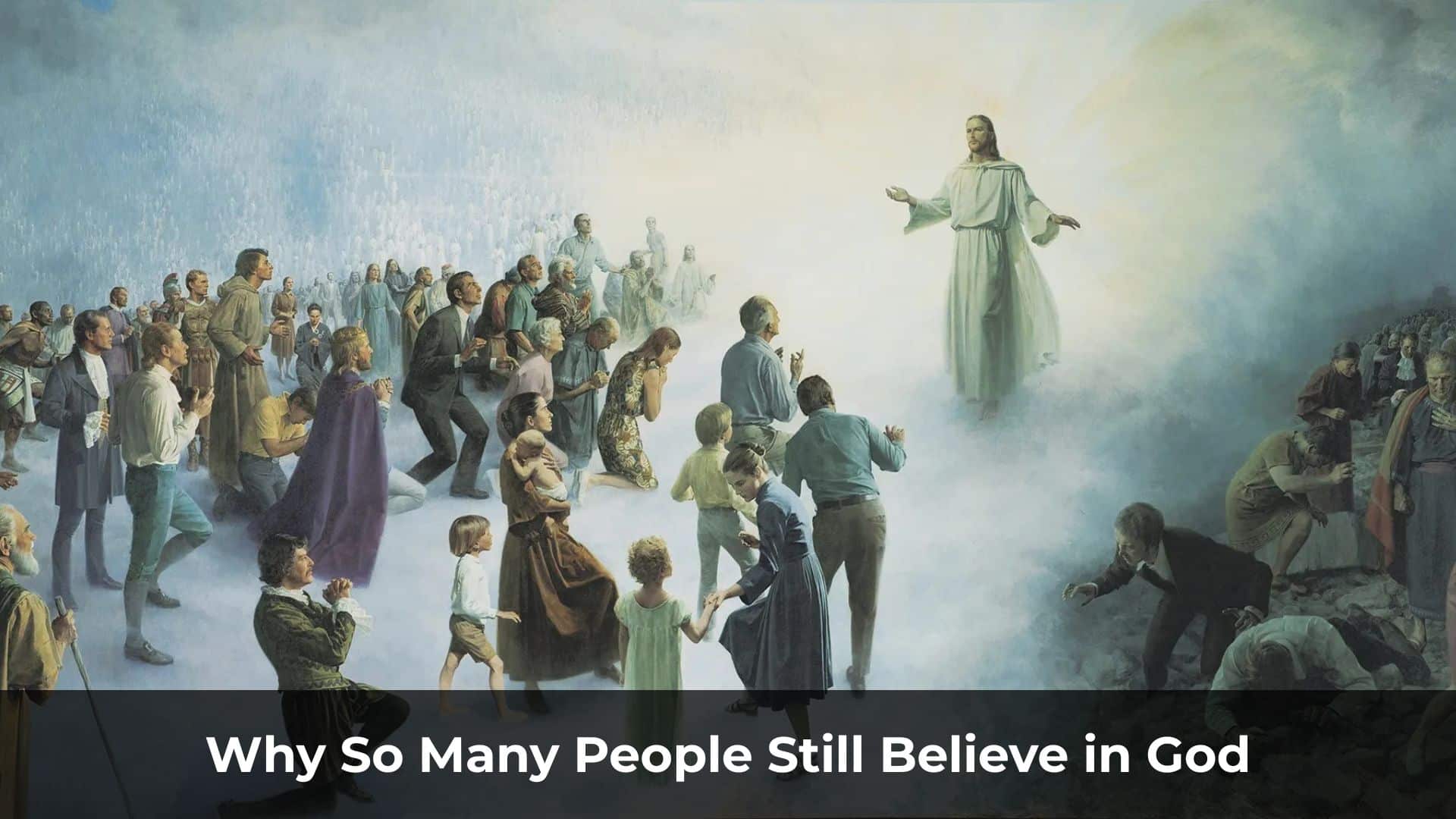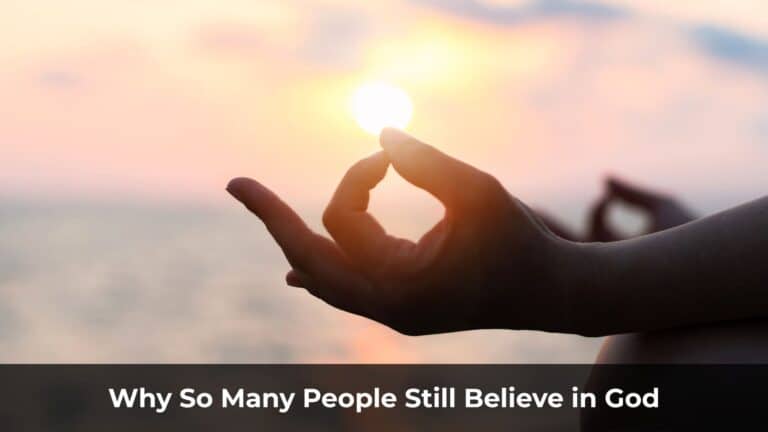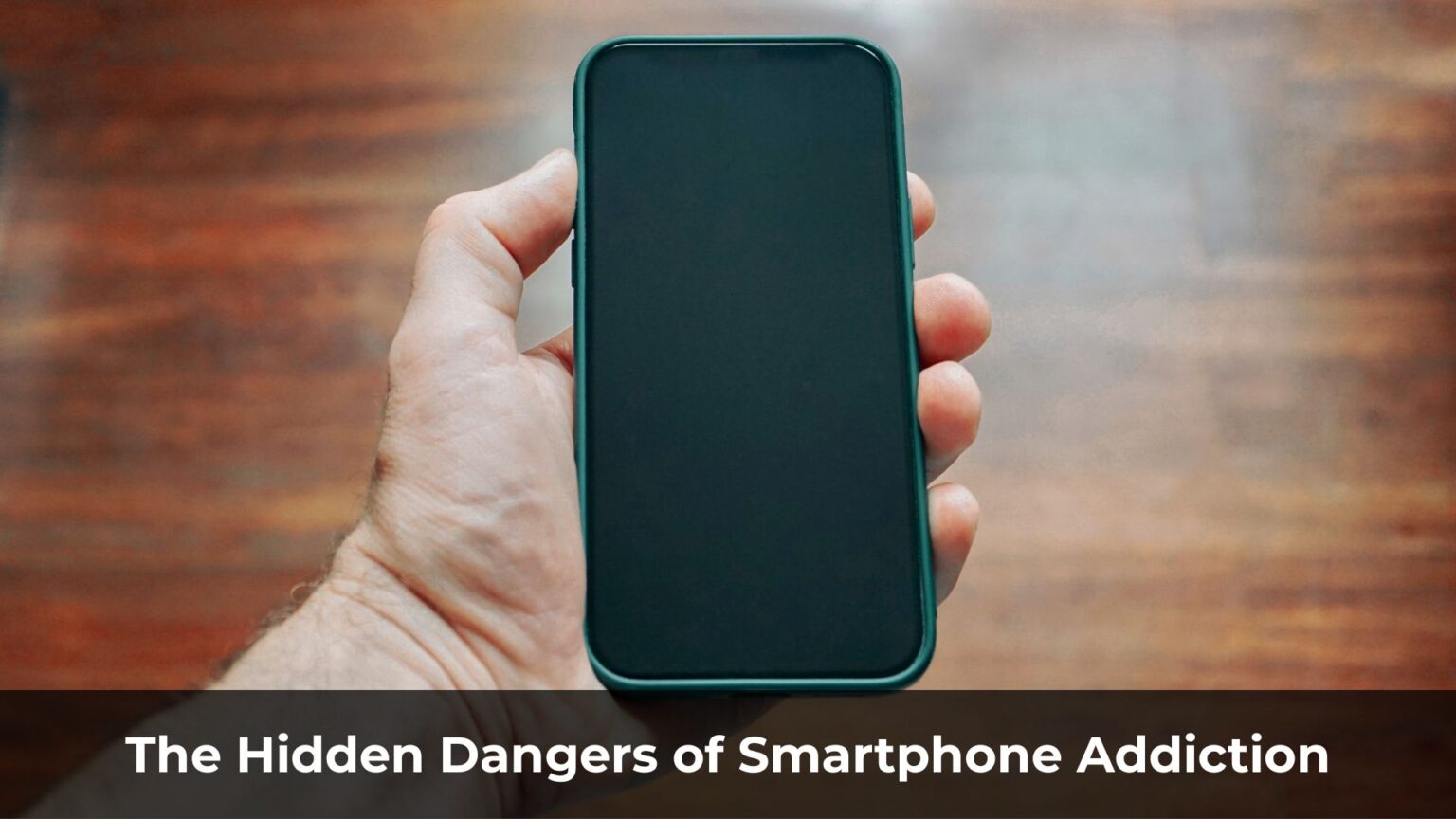In this article, I want to explore a deeply challenging and often controversial topic: atheism. In an age where science and technology have advanced to extraordinary levels—where we can send satellites into space and manipulate genes in a lab—is there still any place for the idea of God?
Many people today assume that belief in God belongs to an outdated worldview, a relic of pre-scientific thinking. And yet, despite all the progress we’ve made, millions around the world still believe in the divine. They still turn to ancient teachings and traditions, finding in them a kind of wisdom that modern science hasn’t been able to replace.
Why is that? And could it be that the question of God isn’t as obsolete—or as irrational—as some assume?
Table of Contents
ToggleThe Atheist Mindset
Many atheists assume that anyone who believes in God must be superstitious, ignorant, or naive.
To them, people who engrave “In God We Trust” on a dollar bill are simply clinging to outdated myths—foolish dreamers lost in a fantasy world.
Their reasoning often goes like this: “I’ve never seen God. If I can’t see Him, He must not exist.”
This line of thinking reflects a worldview shaped by materialist philosophy—particularly the belief in evolution as the foundation of existence, which in turn supports Marxist-Leninist ideology.
Materialism claims that matter determines consciousness. And since God cannot be touched or measured, then—according to this view—He must be a fabrication.
But America took a different path. The United States wasn’t built on dialectical materialism or Marxist theory. It was founded on the belief that God exists—and that He plays an active role in human affairs.
Many Americans still believe that governments may fail, presidents may err, and institutions may collapse—but the moral teachings of God endure and continue to guide us.
Empires rise and fall. Nations come and go. But religions have lasted thousands of years and still remain strong. That alone should give us something to think about.
The Illusion of Atheism
Take a look at the books on your shelf.
Do you honestly believe they came together by accident?
I mean—did the ink, the words, the pages all come into being from a random explosion, then somehow align themselves perfectly to form a coherent, meaningful book?
Of course not. A book requires an author, a printer, a binder—people who designed, wrote, and assembled it with intent.
…
Now consider DNA.
Scientists often describe it as the “blueprint of life”—a biological code made up of billions of letters, all arranged with staggering precision and order.
So here’s the question:
If even a simple book can’t form by chance, how could something as complex and information-dense as DNA—far more advanced than any book or supercomputer—have come into existence randomly?
In 2016, Ray Comfort released a documentary exploring this very question: the logic (or lack thereof) behind atheism. We’ve translated that video into Vietnamese so more viewers can explore this perspective.
Don’t Limit Your Thinking
I once came across a fascinating idea from the brilliant scientist Nikola Tesla. He believed it might be possible to tap into a source of free, unlimited energy—energy drawn not from conventional matter, but from higher dimensions or the unseen spiritual realm.
Long before quantum physics became a serious field of study, there were already scientists like Tesla who sensed that reality went far beyond what we could observe.
And the more they explored, the more they realized just how small and limited we are compared to the vast, mysterious universe we live in.
There are discoveries so extraordinary—so beautifully intricate—that scientists still can’t fully explain them. To call them “random” doesn’t do justice to their depth. Yet, because we can’t measure them with a ruler or put them under a microscope, we often dismiss them.
This is why we need open-minded thinking.
If your belief system is limited to “I’ll only believe what I can see,” then here’s a simple question:
Can you see Wi-Fi signals? 4G? 5G?
No. But they exist. You use them every day.
The human eye can only perceive a narrow band of the electromagnetic spectrum. Beyond that—infrared, ultraviolet—we’re blind.
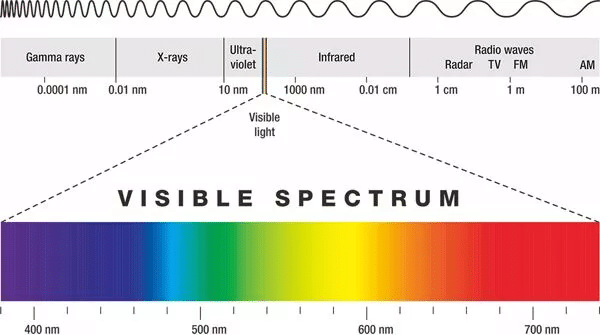
Our ears can only hear certain sound frequencies. Infrasound and ultrasound? We can’t detect them at all.
So clearly, not seeing something doesn’t mean it doesn’t exist.
In fact, much of what drives our modern world is invisible to the naked eye—yet undeniably real.
Spiritual Phenomena That Science Still Can’t Explain
There are countless cases around the world where individuals—sometimes even children—recall vivid memories of a previous life.
Hypnotherapists specializing in past-life regression have helped people uncover what seem to be memories far beyond their current lifetime.
In China, there was a widely reported incident known as the “Dragon Fall in Yingkou,” where witnesses claimed to have seen a dragon-like creature crash and die. The massive remains were said to be taken to Japan, where it was later venerated.
Some doctors and scientists begin as skeptics. But after experiencing near-death encounters—seeing things that defy all scientific explanation—they come out with a completely different worldview. They believe, because they saw.
During the Cold War, the U.S. reportedly experimented with people who had “third eye” abilities—using extrasensory perception to observe the far side of the moon.
There are individuals whose bodies can attract and hold metal objects, as if they’re magnetic.
Some can even stick plastic objects to their skin, baffling scientists who have no explanation.
Skeptics argue it’s just oily sweat. But really—can sweat alone hold up a hammer that weighs several kilograms?
…
These are just a few examples. There are many more.
My point is this: the science we read about in school textbooks is often decades old. Meanwhile, new discoveries and unusual phenomena are happening all the time—many of which you may never hear about.
So keep an open mind.
Don’t put blind faith in science alone.
Atheism vs. Theism: Who’s Right, Who’s Wrong?
There’s an old story about the legendary scientist Isaac Newton.
He once built a detailed mechanical model of the solar system, complete with a gold-plated sun at the center and planets orbiting it with precise accuracy.
When the handle was turned, the planets moved in harmony—beautifully replicating their real-life motion.
One day, Newton’s friend, the astronomer Edmond Halley, came by and was fascinated by the model.
“This is incredible,” Halley said. “Who made it?”
Newton replied casually, “No one. It just came together on its own.”
Halley looked confused. “Surely you’re joking. A model this intricate must have had a designer.”
Newton smiled and said, “Exactly. If this small, mechanical model needed a maker, then what about the real solar system—the vast, complex universe around us? Could that have no Creator?”
At that moment, Halley understood the point. The cosmos is far too elegant, too ordered, to be the product of mere chance.
I don’t know if that story is historically verified—maybe it’s just a parable.
But even as a parable, it carries a profound truth worth contemplating.
Because the laws of physics are so finely tuned that even a minuscule change in just one constant could render the universe uninhabitable.
Atoms wouldn’t hold together. Matter wouldn’t form. Life wouldn’t exist.
I grew up as an atheist.
I never believed in God. I believed in what the textbooks taught me—evolution, materialism—because that’s what I had to memorize to pass history exams.
And so my life went on, year after year, shaped by that mindset.
But as I matured and began reflecting more deeply, I realized something unsettling: Just because I had believed something my whole life didn’t mean it was true.
If God Created the Universe, Then He Must Exist Outside of It
If a person creates a computer, does he live inside the computer?
Of course not. He exists outside of it—he designs it, programs it, and controls it externally.
In the same way, if God created the universe, He wouldn’t be confined within it.
He would exist outside of space and time as we know them.
Some atheists ask:
“Where’s God? Where are the fairies and magical beings? I’ve never seen any of them. You haven’t seen them either. So why believe in something invisible?”
And a believer might respond:
“Well, imagine someone who creates a simulation—a virtual world. Is that person inside the code? No. He exists outside it, overseeing everything.
If someone designs software, they don’t exist inside the screen—they operate from the outside, with authority and control.
So if a Creator made the universe, He would be beyond it—unbound by its physical laws, its dimensions, or its limitations.”
If such a God exists, then He wouldn’t be subject to the rules of space-time, matter, or gravity.
He wouldn’t age. He wouldn’t decay. He wouldn’t be detectable by microscopes or telescopes.
And that’s exactly why we can’t “see” Him the way we see physical things—He’s not part of this created system. He’s beyond it.
Supernatural Abilities: Reality or Myth?
There are certain physical phenomena—documented and witnessed—that challenge the boundaries of science.
For example, some revered monks, including Gautama Buddha himself according to historical accounts, exhibited what is known as incorruptibility. After death, their bodies didn’t decompose as expected. This rare phenomenon, called the incorrupt body, has been observed in several cultures across Asia.
Others left behind relics known as śarīra—small, crystalline structures found in the ashes of high-level practitioners after cremation. These relics are incredibly hard, sometimes resistant to high temperatures, and reportedly emit a faint energy.
Scientists have examined them, but to this day, no one fully understands how or why they form.
Such cases aren’t limited to one region. They’ve been recorded in China, Japan, Vietnam, and beyond.
In Vietnam, there have been monks whose bodies remained intact long after death—no decay, no foul odor. In some cases, scientists observed that fingernails were still growing, or that the body maintained a strange stillness, as if resisting decomposition entirely.
One popular account tells of a Vietnamese monk who self-immolated decades ago. After the fire burned out, his heart remained. At first, it was soft. But over time, it hardened into something solid and refused to rot.
Again, science has no real answer for this.
And then there’s the strange story from China—what some call “The Dragon That Fell in Yingkou.”

If you Google it, you’ll find reports from decades ago describing a massive, serpentine creature crashing to the ground in the Yingkou region. Its corpse reportedly measured several dozen meters long. Newspapers covered it. Thousands of people traveled to witness the scene in person.
Later, during Japan’s occupation of the area, it’s said that the dragon’s skeleton was taken back to Japan for veneration.
Some who claim to possess a “third eye” described the event in vivid detail, aligning closely with what was seen by ordinary witnesses.
The Mystery of the Third Eye
If you’ve never heard of the “third eye,” here’s a starting point: it refers to the pineal gland—a small structure deep within the human brain.
What’s fascinating is that scientists have found this gland to share many of the same features as an actual eye, though it’s hidden beneath layers of brain tissue.
Some researchers even speculate that ancient humans once had a third, functioning eye. Over time, this organ may have atrophied.
Yet in certain individuals—through focused training or spiritual practice—it’s believed the third eye can be reawakened, unlocking the ability to perceive realities beyond the physical world.
The third eye remains a mystery that science cannot fully explain.
And yet, it’s far from a fringe idea.
During China’s Cultural Revolution—just a few decades ago—numerous reports emerged of children and adults exhibiting third-eye abilities.
Even the U.S. and Soviet Union, amid the Cold War arms race, launched classified research programs into extrasensory perception (ESP) and psychic phenomena.
Both nations found individuals who seemed to possess extraordinary abilities. Some of these people were enlisted into experiments to observe the far side of the Moon, or to “remote view” Mars.
Using only their minds—through what was believed to be the third eye—they saw things ordinary human senses could not.
Personal Reflection: From Atheism to Belief in the Divine
If the human brain is a miniature universe, then it’s fascinating that when scientists captured high-resolution images of the cosmos, they found something astonishing—
The structure of the universe closely resembles the neural network inside the human brain.
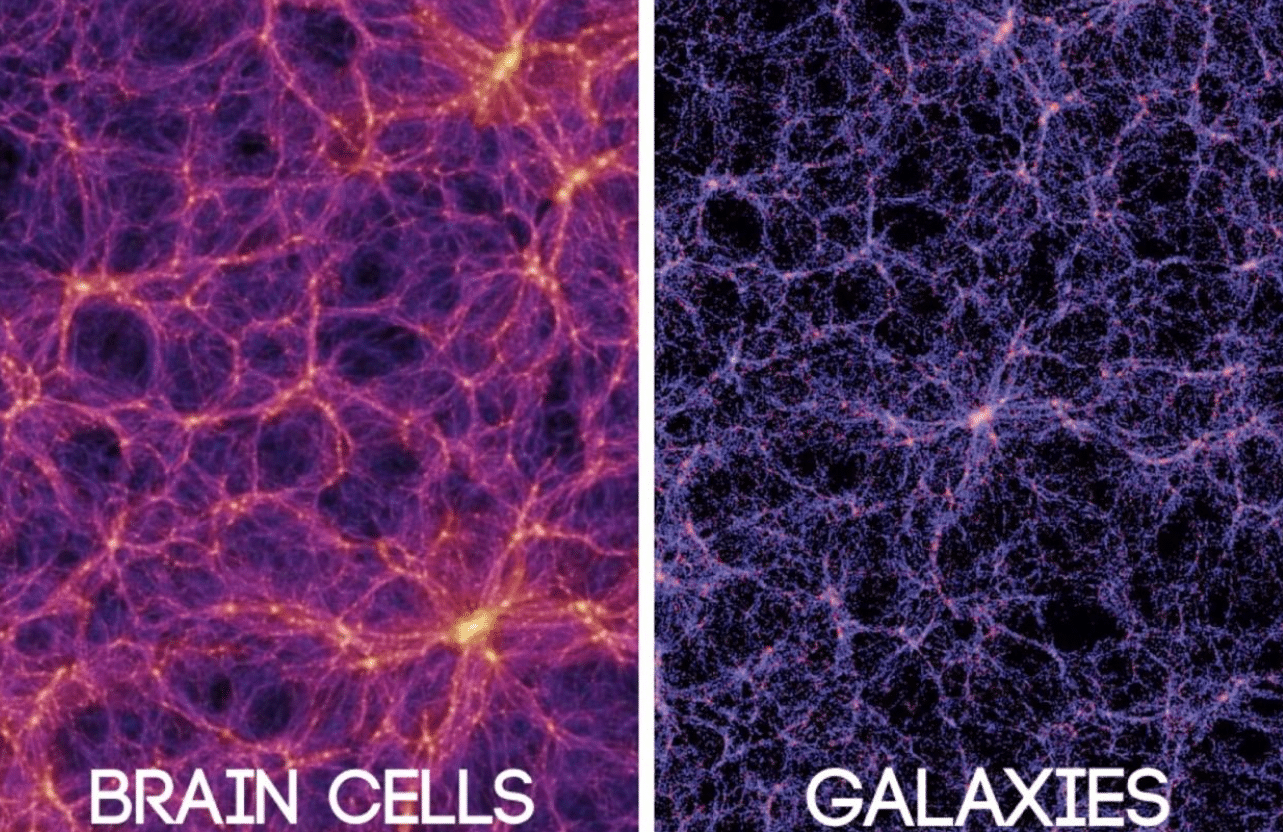
Some researchers have even posed a bold question:
Are we living inside the mind of a vast, higher life form?
I once read a report of a child who could generate fire—real fire—at will.
But this wasn’t ordinary flame. It was so intense that it could melt not just furniture but even metal into liquid.
No existing law of physics could account for it.
As I connected the dots between these events, I began to realize something unsettling:
Atheism leaves too many questions unanswered.
Perhaps that’s why so many sci-fi creators have drawn from these accounts when crafting stories like X-Men.
Fiction, after all, often begins with a seed of truth.
Years ago, I fully believed in evolution. I accepted the idea that humans evolved from apes without question.
But then I learned that the textbook image comparing human and animal embryos—the one used to support evolution—was actually a fabrication.
It wasn’t a real scientific discovery. It was a staged illustration by Ernst Haeckel.
I believed in those things for years. But the deeper I dug, the more I found holes in the foundation.
Too many things simply didn’t add up.
From everything we’ve explored in this article so far, one thing becomes clear: Atheism, for all its claims to reason, has glaring gaps.
In cosmology, scientists are now discovering extra dimensions—quantum particles that appear and disappear without explanation.
In quantum mechanics, they’ve found that even the tiniest atom contains vast, empty spaces. Between particles lie “micro-spacetime” zones that no one fully understands.
Even time-travel concepts in science fiction are often based on real theoretical frameworks.
Take, for example, movies where characters shrink and enter other dimensions to transcend time.
That’s not just imagination—it’s a hypothesis being actively explored in today’s scientific world.
Final Thoughts: Why I No Longer Believe in Atheism
I used to be a committed atheist.
But not anymore.
This article reflects my personal perspective—one shaped by having lived through both sides of the belief spectrum.
Of course, I’m not claiming to have all the answers.
My understanding is still limited, and I’m continuously learning, questioning, and growing.
Yet when I look back at my own thoughts from just a year or two ago, I can clearly see how far I’ve come.
Ideas I once held as absolute truths now seem shaky—or even completely wrong.
That’s why I wrote this.
Not to convince you, but to invite you:
To reflect.
To stay curious.
And to consider the possibility that there’s more to this world than what we can see.
I hope this has opened up a new perspective for you—just as it once did for me.
